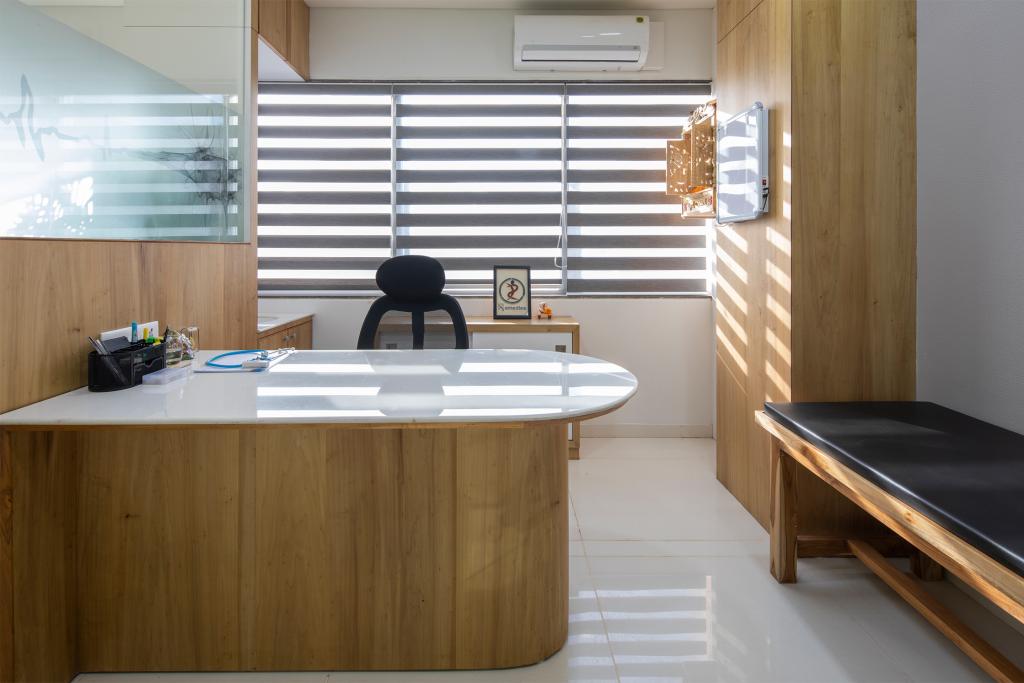Subtotal: $340

Key Criteria for Designing a Doctor's Clinic: A Comprehensive Guide
Designing a doctor's clinic requires a careful balance between functionality, patient comfort, and professional aesthetics. The space needs to be efficient for healthcare providers, while offering a calming atmosphere for patients. Whether you're planning to design a small private clinic or a multi-specialty center, certain fundamental elements are essential. Below are the critical criteria to consider when designing a doctor's clinic.
1. Efficient Space Planning
Effective space planning is the foundation of a well-designed clinic. The layout should maximize the use of space, ensuring that patient flow is smooth and uninterrupted. Areas like the waiting room, consultation rooms, examination rooms, and admin offices must be strategically placed to avoid congestion. Separate spaces for staff, doctors, and patients ensure a streamlined process, improving the overall patient experience.
Key takeaway: Ensure your clinic design optimizes flow and functionality for both patients and staff.
2. Patient Comfort and Accessibility
A doctor's clinic should make patients feel at ease the moment they walk in. The design should incorporate comfortable seating, soft lighting, and calming colors in the waiting areas. Easy access for elderly patients or those with disabilities should also be prioritized by including ramps, wide doorways, and accessible restrooms.
Key takeaway: Comfort and accessibility lead to a better patient experience, making it an essential criterion for clinic design.
3. Infection Control and Hygiene
Maintaining a sterile environment is critical in healthcare settings. When designing a clinic, it's important to choose materials that are easy to clean and maintain, such as antimicrobial flooring and washable wall coverings. Adequate ventilation and air filtration systems are crucial for maintaining air quality and controlling the spread of infection.
Key takeaway: Use hygienic materials and invest in proper ventilation to ensure infection control within your clinic.
4. Privacy and Confidentiality
Patient privacy is of utmost importance in a doctor's clinic. The design should ensure that consultation rooms are soundproofed to maintain confidentiality during conversations. Reception areas should be designed to avoid patients overhearing sensitive discussions. Proper planning of these elements fosters trust between patients and healthcare providers.
Key takeaway: Design consultation spaces with soundproofing and adequate privacy measures to build patient confidence.
5. Technology Integration
Modern clinics rely heavily on technology for both administrative and clinical operations. From electronic health records to diagnostic equipment, the clinic design must accommodate the necessary technology seamlessly. This means incorporating provisions for power outlets, data ports, and secure internet connections throughout the clinic.
Key takeaway: Ensure the clinic design is future-proof with technology integration to improve efficiency and patient care.
6. Aesthetic Appeal
While functionality is key, the aesthetics of a clinic also play a major role in setting the right atmosphere. A modern, clean, and welcoming design can help ease patient anxiety. Choosing calming colors, adding greenery, and using natural light can contribute to a serene environment that enhances the overall patient experience.
Key takeaway: A thoughtfully designed aesthetic improves patient comfort and enhances the clinic’s professional image.
7. Safety and Compliance
Every healthcare facility must comply with local building codes and medical regulations. When designing a doctor's clinic, ensure that the layout, materials, and fixtures adhere to healthcare safety standards. This includes appropriate lighting, fire exits, and safety equipment. In addition, clinics should be designed with emergency accessibility in mind.
Key takeaway: Adhere to safety standards and local building codes to create a secure and compliant clinic environment.
Conclusion
Designing a doctor's clinic goes beyond aesthetics. It’s about creating a space that’s functional, comfortable, safe, and in compliance with health regulations. Efficient space planning, patient comfort, hygiene, privacy, technology integration, aesthetics, and safety should all be carefully considered. With these criteria in mind, you can create a clinic that meets the needs of both healthcare providers and patients.
By focusing on these key elements, you can ensure that your doctor's clinic design is not only efficient but also enhances patient care and satisfaction.

 Velvet Teal Blue
Velvet Teal Blue





